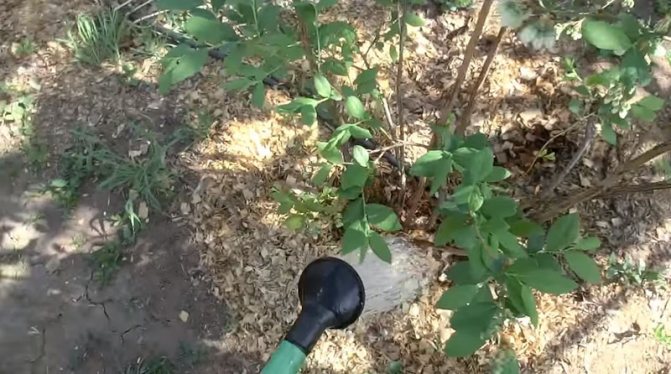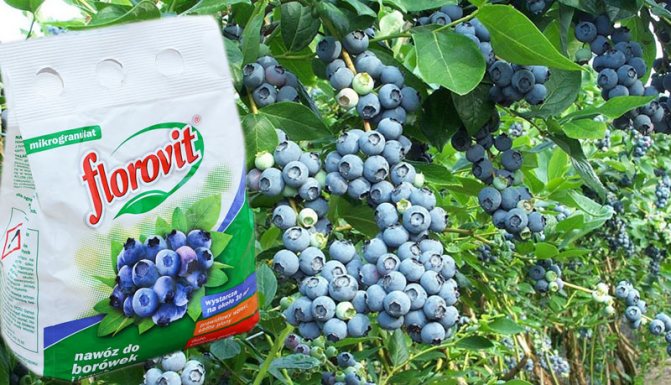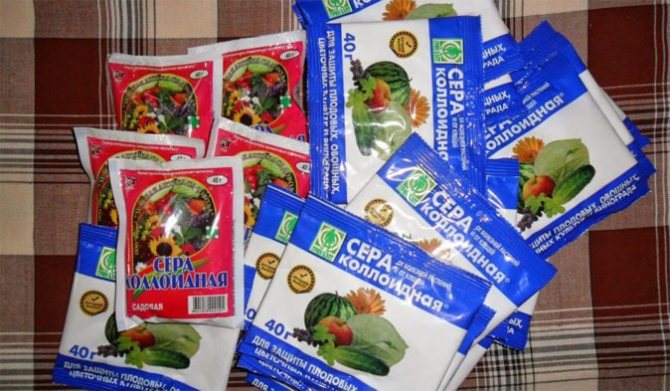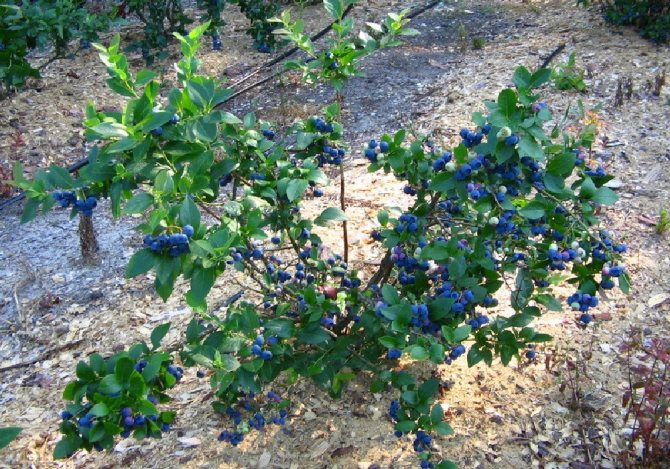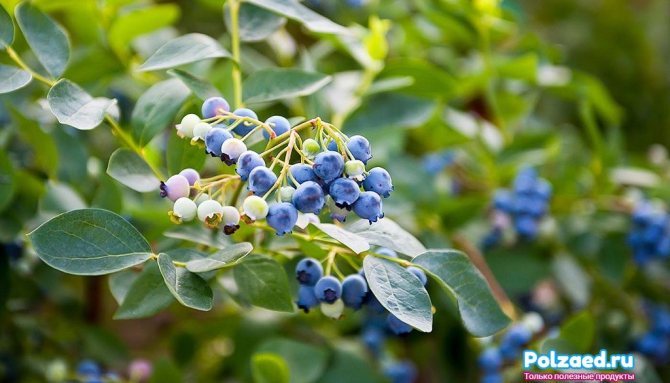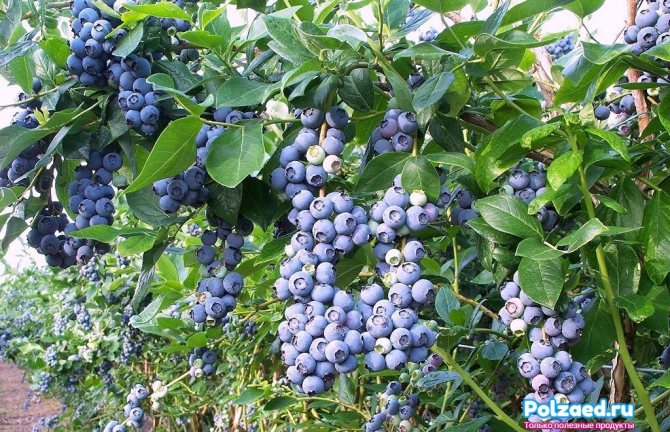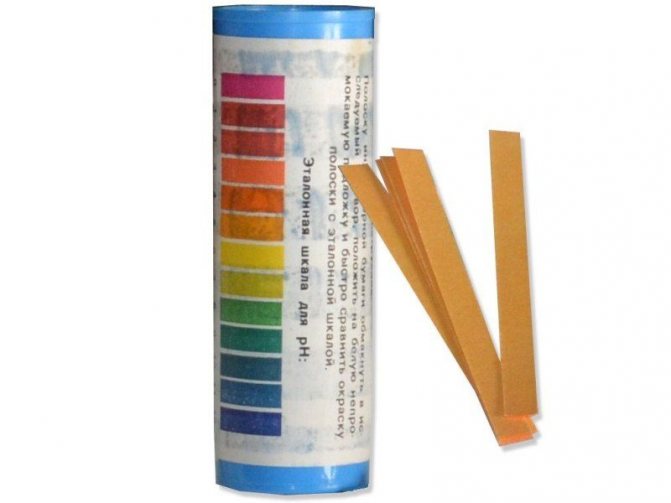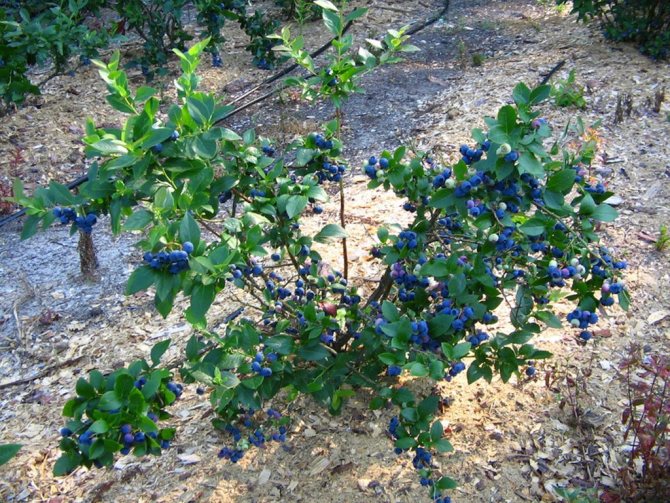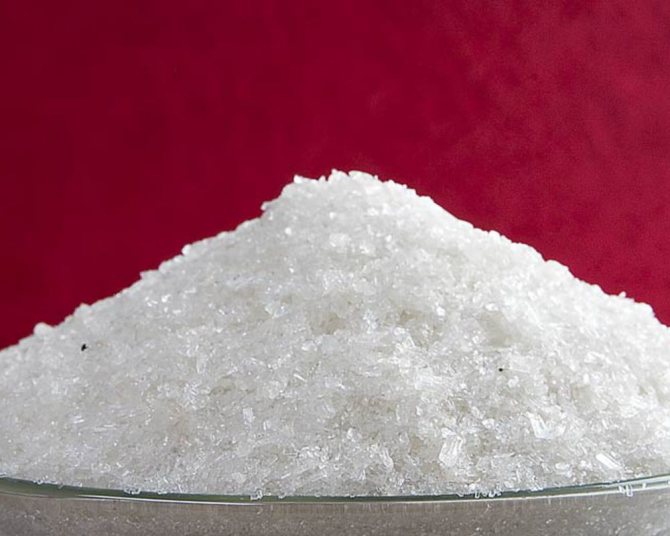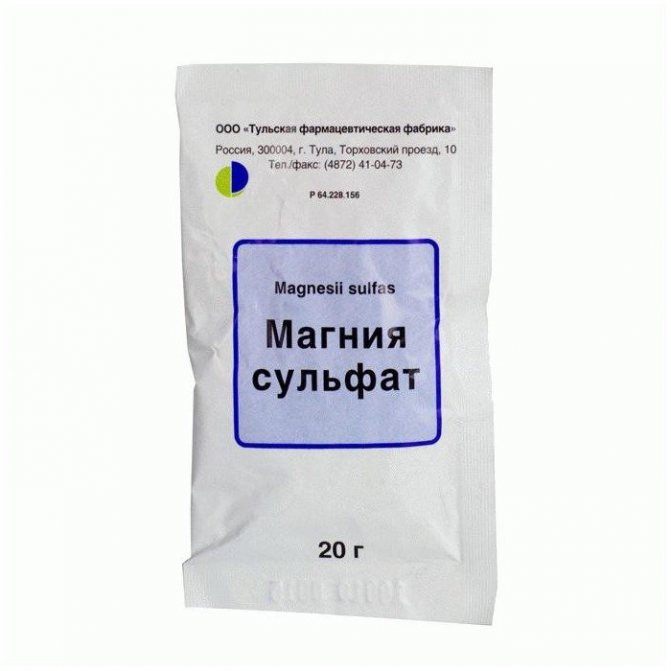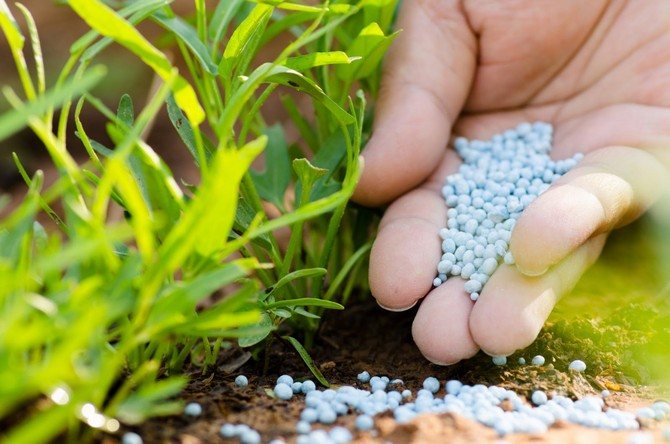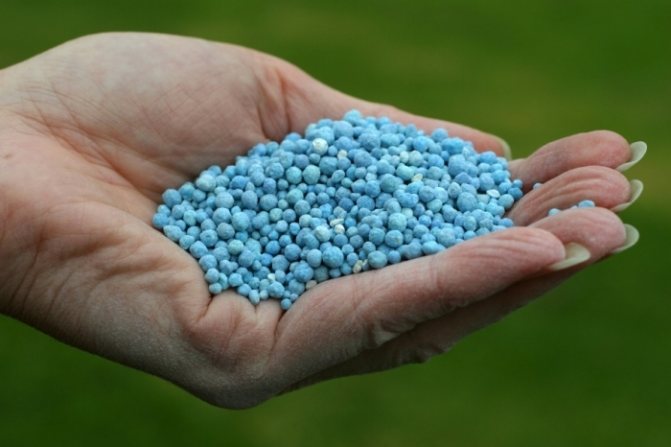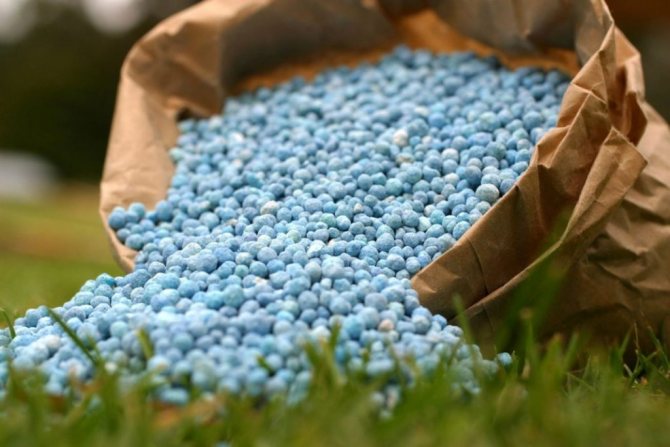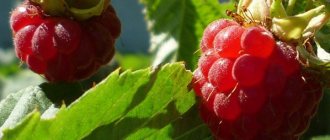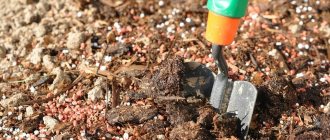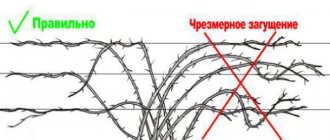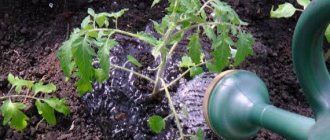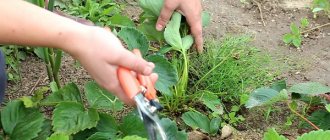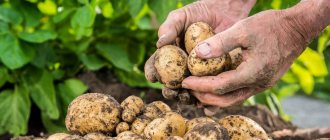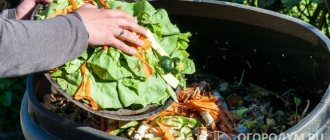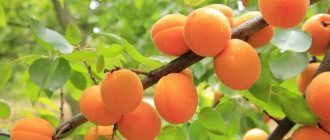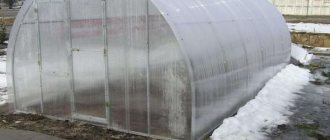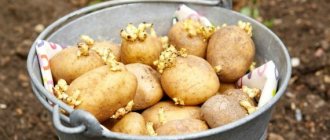How to acidify the soil for blueberries
In order for the blueberry bush to grow, develop and bear fruit normally, sufficient acidification of the planting land is needed. The optimum pH should be between 4 and 5.
If the pH is higher than these values, then the planting soil has a less alkaline acidic composition. This means that before planting, it will be necessary to apply fertilizers that increase the acidity of the soil. The following means are usually used:
- Sulfur. Once added to the soil, it combines with bacteria and turns into sulfuric acid.
- Lemon acid.
These substances can be laid in the ground before planting or dissolved in water and then watered with the resulting solution to the ground. This is how you can acidify the soil for blueberries.
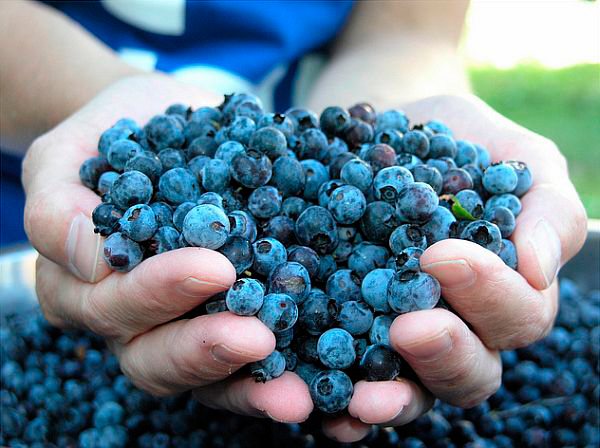
Like any fruit-bearing shrub, blueberries need a specific set of trace elements and chemicals. Since the soil cannot have such a rich composition, the necessary elements must be introduced artificially, that is, fertilized.
Ideally, the composition of the soil should be determined every 3-4 years under laboratory conditions. But ordinary gardeners don't bother with it. In practice, this analysis is carried out only on large farms. Top dressing is applied, focusing on the condition and appearance of the plant.
Feeding blueberries in autumn
Autumn feeding of garden blueberry is carried out in order to prepare the shrub for the upcoming cold weather. Fertilizers should be applied after harvesting and pruning the plant. Before that, gardeners recommend treating blueberries with preparations such as RanNet and Garden Var. This will protect the vine from diseases and pests.
After abundant watering, you can apply top dressing to the soil. Remember that the soil must be sufficiently moist. Potash and phosphate fertilizers are usually applied. It is strictly forbidden to use nitrogenous dressings - such dressings are introduced in the spring, as they contribute to the active growth of greenery.
The amount of fertilizer applied for blueberries depends on the following factors: soil acidity, the age of the shrub, the presence of mulch, the irrigation schedule and external signs of a lack of any component.
If blueberries are deficient in one or another trace element, then by its appearance everything is clear. Let's analyze in more detail:
- calcium - molding at the edges turns yellow and deforms;
- phosphorus - the leaves turn purple and take root on the stem;
- magnesium - all leaves become red;
- potassium - the leaves die off, and the top of the young shoots dries up;
- sulfur - the foliage turns gray, and then completely turns white;
- iron - the leaves turn yellow into a green mesh;
- boron - the growth of shoots stops, the leaves acquire a bluish tint.
Fertilizers for blueberries
Blueberry feeding usually takes place in early to mid September. Let's consider further how you can feed blueberries in the fall. Best to use:
1. Phosphorus and potash mixtures.
Phosphorus increases the resistance of blueberries to various plant diseases, increases the viability of the shrub, and also affects the taste of berries and has a beneficial effect on the amount of harvest. It is better to use superphosphate - it is enough to add 100 g of the composition to the bush.
Potassium is needed to increase frost resistance. In addition, it retains moisture in the soil and makes the plant stronger. For one bush, 30-40 g of potassium is enough.
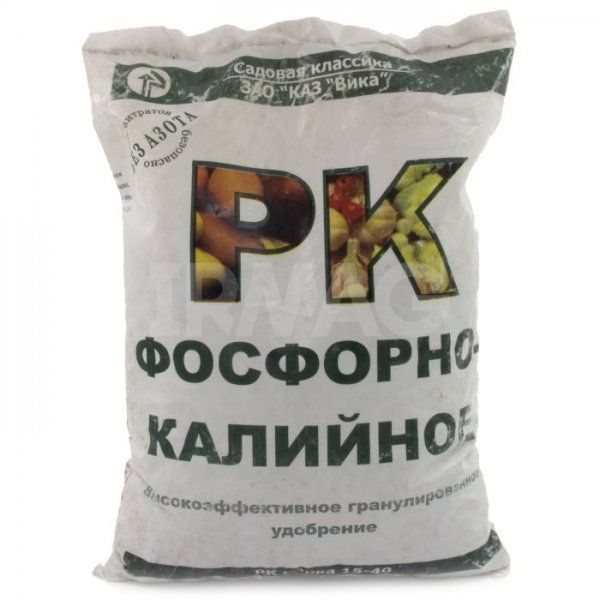

2.Complex fertilizers.
These formulations can be purchased at specialized stores. Great for blueberries:
- Fertika Autumn;
- Kafom K;
- Ammofoska;
- AGRECOL Autumn Nitrogen Free.
When choosing a product, remember that the composition for feeding the plant should not contain chlorides. This is absolutely contraindicated for blueberries.
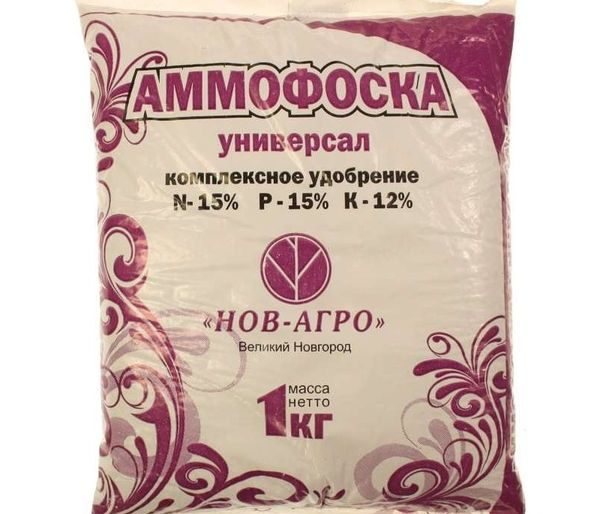

3. Organic fertilizers.
As a rule, organic matter is often used for horticultural crops, but blueberries do not need it. You don't need to use traditional manure, compost or green manure for the bush.
The only organic fertilizer that works for blueberries is sour high-moor peat. It acidifies the soil well, is able to retain moisture and has a high porosity.
Now you know how to feed blueberries in the fall. Fertilizers must be applied in a timely manner and in the correct proportions, otherwise the plant can be destroyed. Therefore, it is so important to study all the available information on how to feed blueberries. Remember, fertilizer is a useful thing, but only in the right hands.
The key to a good blueberry harvest is the correct application of suitable fertilizers. Top dressing is carried out in accordance with a special scheme. Both a deficiency and an excess of minerals are harmful to plants. It is important to adhere to the recommendations of experts, then blueberries will delight their owners with an abundance of fruits for many years.
How to plant
Before planting, it is necessary to create an acidic soil and select the most illuminated area. After that, we dig a spacious, not too deep hole, which must be filled with a substrate consisting of the following elements:
- garden soil (50%);
- peat (45%);
- pine needles and sawdust (5%).
It is recommended to plant seedlings according to the scheme - 50˟50˟50 centimeters. The ground under the bush often becomes neutral or alkaline, so three years after planting it may stop growing.
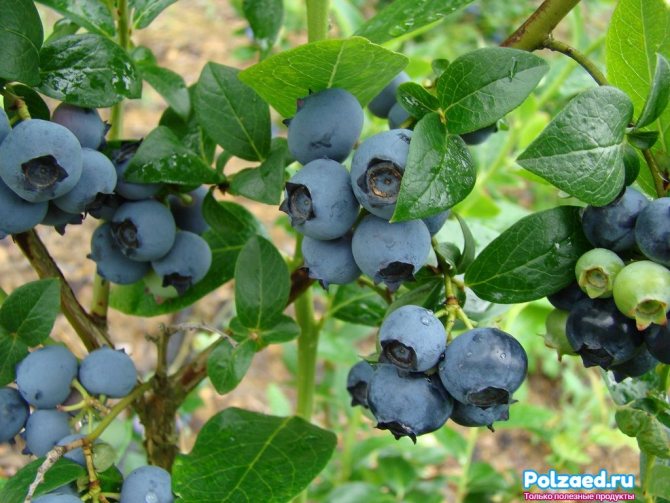

To avoid such problems, it is advisable to fill the pit with needles or high moor peat before planting. Under the bush, you need to regularly apply fertilizing, consisting of mineral fertilizers. To increase the acidity, 50 grams of sulfur can be added to the soil.
Plant care is reduced to loosening the earth, removing weeds several times throughout the year. But it is necessary to water the bushes systematically, since the lack of water affects the amount of the crop and the taste of the fruits. If the summer turned out to be sultry, then the entire shrub should be sprayed with liquid.
Autumn feeding
Correct, timely fertilization is considered an important factor in successful blueberry cultivation. The use of additives can achieve the following results:
- increased productivity;
- activation of the growth of bushes;
- improved taste.
In the fall, it is necessary to carry out measures to prepare for the cold weather. Plants are able to tolerate frosts down to -25 ° C in the presence of a thick layer of snow. In snowless winters, the permissible temperature indicators decrease, and the probability of freezing of branches increases. Late blueberry varieties are especially susceptible to cold.
To protect the plant, the branches are bent to the ground, wire arcs are installed around the bush. Burlap or other non-woven materials are fixed on them. Spruce legs are pounced on top and snow is poured. Warming is removed with the arrival of spring, the tips of all frozen branches are cut off.
Tillage
In the autumn, mulching is carried out to preserve moisture. The procedure consists of placing various materials on the soil around the plant. Sawdust, straw, oak leaves, peat are used as mulch. The layer thickness should be at least 10 - 12 cm. When the mixture decomposes, the berry will receive additional nutrients. Mulch is changed at least twice a year.
In the presence of a protective layer, the buds bloom a little later than usual in spring. So the bushes more easily cope with unstable spring temperatures, do not freeze out in the cold. Mulching helps fight weeds, moisturizes and oxidizes the soil. Experts say that the use of sawdust increases the yield of the bush by almost 100%, and the use of oak foliage - by 54%.
Only rotted sawdust is suitable for mulching. Fresh material activates the uptake of nitrogen from the soil, which slows down the growth of shrubs.
In the autumn months, blueberries need regular water-charging irrigation. Garden watering cans and hose splitter nozzles are suitable for this, which do not erode the soil and do not expose the rhizomes. Watering should be done 1 - 2 times a week, preferably in the evenings. One adult bush has at least one bucket of water. The soil should be saturated with moisture 40 cm deep.
Rules for planting and watering blueberries
Healthy planting material is the key to active growth of the shrub. Young two-year-old seedlings are suitable for planting. The root system must be closed. Saplings are planted in the spring or autumn.
For young seedlings, it is important to choose a windless, well-heated area. In the sun, the plant will grow well, the berry will ripen sweet, the bushes will be healthy.
Instructions for planting blueberry seedlings:
- Site selection: soil preparation, fertilization, determination of the acidity level; digging, loosening;
- It is necessary to dig holes (diameter - 1 m, depth - 0.5 m), the distance between them is 1.5 m. Pour a peat mixture from high-moor peat and coniferous sawdust into the hole, do not tamp the layer;
- It is good to moisten the earthen lump around the roots of the seedling, if it is very dense, then gently knead it, but so that it does not crumble. There are important mushrooms in the ground, which in the future will participate in the nutrition of the bush;
- Pour 5 liters of water into the hole, place a seedling in the middle, sprinkle the empty space with earth, tamp the earth a little near the bush;
- Mulch the hole with a layer of coniferous sawdust, make the mulching layer 5-10 cm. The procedure will avoid the appearance of weeds.
- Loosening is carried out for better air permeability, which is important for the root system. The roots are located close to the surface of the ground, so loosen should be done carefully so as not to injure the bush. Weeding must be done manually, without gardening tools. After removing weeds, water and mulch the hole.
After planting a young seedling for the next season, you will need to apply fertilizer. You can make mineral fertilizing yourself. Manufacturing proportion:
- Ammonium sulfate (90 g);
- Superphosphate (110 g);
- Potassium sulfate (40 g).
Mix mineral fertilizers thoroughly, apply under the bush in the spring.
On a note. The main condition is that potassium chloride cannot be used from mineral fertilizers. He can destroy the plant.
Pruning is an important procedure in the care of bushes. In the third season, sanitary pruning is carried out for better shrub growth. When pruning, remove dry, damaged branches, thin out the crown of the bush a little. A tall bush is formed by pruning, giving the bush an aesthetic appearance.
In order to prevent diseases, after pruning blueberries, the bushes are treated with fungicidal agents (Euparen, Topsin).
Tips for watering garden blueberries:
- The blueberry hole should be moist, but no stagnant water should be allowed. The roots are located close to the surface of the earth, therefore, with excessive moisture, they begin to rot;
- It is important to prevent the soil from drying out and crusting on the ground. Soil moisture must be maintained at 60-70%. It is better to water from a watering can. If the soil is moistened with a hose, the jet can erode the mulch layer;
- Watering frequency is every three days, twice a day. Favorable hours for watering are morning and evening.An adult bush will require 5 liters of water;
- The bushes need abundant watering in July and August. During this period, the formation of flower buds of the future harvest occurs;
- If the days are hot and sunny, then besides watering, the bushes can be sprayed with cool water. The procedure helps to cool the plant and increases the rate of photosynthesis.
When growing garden blueberries on the site, you need to choose a bed with acidic soil or acidify the soil yourself. When using products to increase the acidity level, you must follow the safety rules. If you follow the agrotechnical rules for growing and caring for a shrub, the plant will develop well and bring a good harvest for many years.
Fertilizers for blueberries
In autumn, the shrubs are fed only with minerals. The best solution would be fertilizers containing potassium, nitrogen and phosphorus. The lack of useful components is easy to determine by the appearance of the plant:
- Nitrogen. It provokes a slowdown in the growth of blueberries. Old foliage takes on a yellow-green hue. With a strong lack of nitrogen, the entire bush turns yellow, then red tones appear in the color. The yield of the berry plant decreases, the size of the fruits decreases.
- Calcium. There is a pronounced deformation of the leaves, yellowness occurs at the edges.
- Phosphorus. The foliage of the plant is pressed against the shoots, painted in red shades.
- Potassium. Spots become visible on the leaves, the tips dry out, the tops of young shoots darken and then die off.
- Bor. The foliage changes its natural color to bluish, the bushes do not grow, new shoots die off.
- Magnesium. The edges of the leaves turn red.
- Sulfur. The plant becomes yellowish white. With a high deficit, the bushes completely turn white.
- Iron. Young leaves at the top turn yellow between the veins, are covered with a green mesh.
Knowing the listed signs, you can accurately determine which minerals are lacking in blueberries. This allows you to timely replenish the lack of useful microelements and additionally feed the plants.
Ash, compost and organic matter (manure, chicken droppings) are completely contraindicated for blueberries. They alkalize the soil, provoking starvation of the berry. These types of fertilizers have a high nitrogen content, which burns the root system.
Symptoms of Micronutrient Deficiency
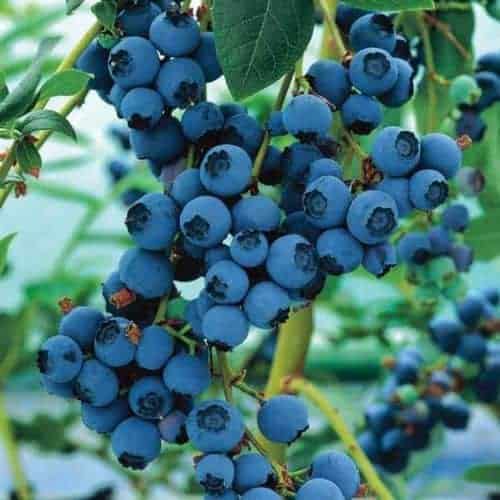

The appearance of the plant indicates a lack of nutrients and the need for feeding blueberries. You can understand which element the shrub lacks by the following features:
- slow growth and yellowed foliage with reddish blotches - nitrogen starvation;
- purple shade of leaves and pressing to the stem - lack of phosphorus;
- the appearance of dark marks on the leaf plates and the dying off of the tops of young shoots - little potassium;
- reddening of the edge of the leaves and their further twisting - lack of magnesium;
- deformation and yellowing of the edges of the leaf plates - the plant needs calcium;
- change in leaf color: alternation of yellow veins with green ones - iron deficiency;
- gradual discoloration of foliage - a small amount of sulfur;
- coloring of leaves in blue, slowing down or stopping the growth of shoots - boron deficiency;
- the appearance of small foliage that changes color to brown or bronze - insufficient amount of zinc.
To return the plant to a healthy look, the soil should be saturated with the missing micro- and macroelements.
Application procedure
Plant feeding begins only from the second year after planting. In the first year, the berry does not need additional nutrition. For active growth, the following additives are most often used:
- If the acidity of the soil is more than pH-5.0, ammonium sulfate is necessarily used. The optimal amount is 100 g per 10 m² of soil.
- At normal pH values, the soil is also enriched with ammonium sulfate in the amount of 85 - 90 g.Each fruiting plant is additionally fed with potassium sulfate (40 g) and superphosphate (100 g).
- Many gardeners use balanced mineral mixtures, for example, Florovit, Kemira Universal. Such fertilizers effectively acidify the soil, ensure the active growth of each bush, even at low pH values.
- In autumn, colloidal sulfur is additionally introduced to areas with low acidity, which compensates for this deficiency.
Any fertilizer is always applied only in dry weather, in the morning or evening, when the sun's rays do not hit the plants. It is not recommended to feed blueberries in the rain or immediately after it. Bushes are fertilized from the second year on the basis of:
- Biennial plant - 1 tbsp. l .;
- Three-year plant - 2 tbsp. l .;
- Four-year-old plant - 4 tbsp. l .;
- Five-year-old plant - 8 tbsp. l .;
- From 6 years old and more - 16 tbsp. l.
What can not be fertilized with culture
It is strongly not recommended to feed the shrub with folk remedies:
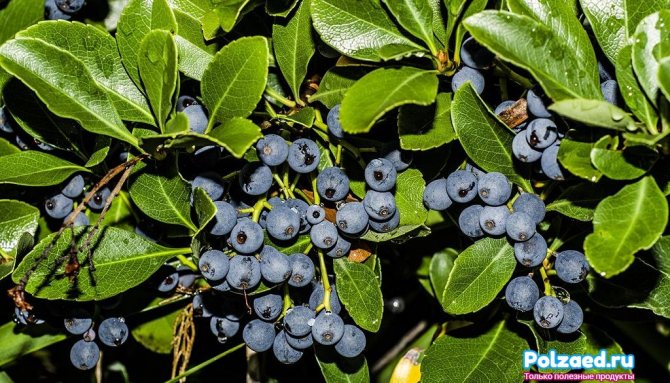

These ingredients make the soil alkaline, which can eventually dry out the plant. An increased amount of nitrogen enhances the destructive effect that leads to root burning.
Some gardeners fertilize shrubs with yeast. However, this method cannot be called effective, since the yeast quickly absorbs oxygen.
Useful Tips
Novice gardeners who plant blueberries on their site often make serious mistakes. Several important recommendations will help them avoid many of the problems associated with growing this healthy and tasty berry:
- you should not place seedlings in partial shade, since their growth will slow down, and the fruits will ripen longer;
- bushes 2 - 3 years old are considered ideal for planting in the ground;
- it is not recommended to loosen the soil too often, this can dry out the blueberries;
- mulching is a mandatory procedure that protects against freezing, moisture loss, overheating;
- moderate regular watering is the key to successful berry growing;
- compost, chicken droppings, manure are not suitable for plant nutrition;
- after applying mineral fertilizers, the bushes should be watered;
- to maintain optimal soil acidity, it is enough to water blueberries with a citric acid solution twice a month (based on 2 tsp of acid per 3 liters of water);
- in severe cold (from -25 °), the bushes are covered with spruce branches, a wire frame is first created for this;
- a significant decrease in the number of berries is observed from 10 years or more, therefore it is necessary to cut off old branches.
Features of growing blueberries: what fertilizing are required
The main distinguishing feature of growing blueberries in the garden is the need for an acidic environment (3.5-5 pH). Therefore, blueberries are planted in an acidic peat mixture (based on swamp red peat, 50%), mixed with coniferous litter (rotted pine needles, 40%) and sand (10%).
If you plant blueberries in ordinary garden soil of a neutral reaction, or even more so in alkaline, the same loamy or sandy loam, then you can not even dream of significant yields. The shrub will grow poorly and stunted.
However, just planting blueberries in acidic soil and using conventional fertilizers is not enough, over time you will need to maintain acidity at the required level anyway (since it will decrease), namely, feed the blueberries with acidic fertilizers or use special acidifiers (not fertilizers! ).
Interesting! The fact is that a specific fungus lives on the roots of blueberries in close symbiosis (symbiotic relationship) - ericoid mycorrhiza, which helps the plant absorb nutrients from the soil, and it lives only at low acidity. In other words, the acidic environment is needed not by the blueberries themselves, but by the mycorrhiza, which is located on the roots of the blueberries.
However, often novice gardeners focus exclusively on creating an acidic environment, not paying due attention to feeding with basic macro- and microelements, and blueberries, like other cultivated plants, need nitrogen, phosphorus, potassium, magnesium, sulfur and other nutrients.
Advice! Be sure to purchase special instruments for measuring soil acidity.
Video: how to water and fertilize blueberries
Signs of micronutrient deficiencies
The composition of the fruit directly depends on the quality of the soil: the higher the concentration of nutrients, the more vitamins. Deficiency of elements is tracked in appearance:
- nitrogen - growth slows down, leaves shrink, turn pale, turn yellow, yield decreases;
- phosphorus - leaf plates acquire a purple hue, nestle against the stems, the berries decrease in size;
- potassium - development is inhibited, the space between the veins brightens, black necrotic spots appear, young stems die off;
- magnesium - at first the lower leaves change: they twist, become covered with red veins, the whole plant is gradually damaged;
- calcium - the green mass is deformed, chlorotic spotting appears;
- iron - yellow streaks become visible on the leaves, with acute starvation the tips look burnt, the tissues die off;
- sulfur - gray or white spots appear;
- zinc - leaf plates stop developing, turn gray, after which they turn brown or bronze, the edges turn brown;
- boron - growth is greatly slowed down, the leaves change color to blue.
Tall blueberries need more fertilization than short ones. The first is fed according to the schedule, the second - when these symptoms appear.
When to feed blueberries in spring, summer and autumn: optimal timing and scheme
Many experienced gardeners adhere to this scheme for feeding blueberries in spring, summer and autumn:
Naturally, the composition of the fertilizer differs from the season and the phase in which the plant is located.
- The first feeding of blueberries is done immediately after waking up (after the snow melts) and swelling of the buds, in other words, during the period of active growth of the vegetative mass. It (top dressing) should consist mainly of nitrogen fertilizers (ideally, ammonium sulfate). But you can take a complex mineral fertilizer, in which there are equal parts of all macroelements, such as nitroammofoska (16% nitrogen, phosphorus and potassium each).
- The second feeding is carried out after flowering (at the beginning of the formation of ovaries and ripening of berries). Its goal is to improve the quality and sugar content of fruits, which means that it is necessary to fertilize blueberries with potassium fertilizers (+ trace elements, especially magnesium).
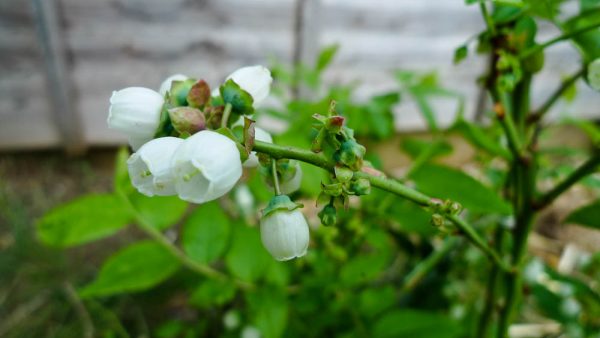

- The last (autumn) feeding of blueberries is done after fruiting and picking berries, i.e. in the fall. The purpose of this autumn dressing is to help the shrub plant new flower buds for the next year, as well as prepare the plant for winter (strengthen immunity and improve its winter hardiness). So, it should be a phosphorus-potassium fertilizer (the same superphosphate + potassium sulfate).
First aid when changing appearance
The topic of crop care must be taken seriously. In the process of growth, its fruits can be exposed to fungal and other diseases provoked by a lack of moisture, poor soil quality.
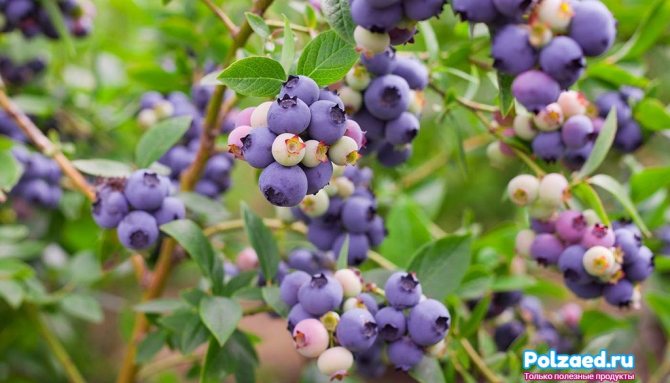

Viral diseases can lead to the death of the bush:
- filamentous branches;
- red ring spot;
- dwarfism.
With yellow leaves, the first thing to do is to acidify the soil using the above methods. When young shoots die off, the plant needs potassium, with reddening of the foliage - in phosphorus.
If the variety does not take root, the problem may lie in the wrong choice for the area. Below are a few varieties that are most suitable for breeding in our regions:
- "Patriot" - tall, frost-resistant;
- “Elizabeth” is tall, with rather large fruits;
- "Duke" - tall, frost-resistant, late-flowering;
- "Northland" - tall, popular in decorative floriculture;
- "Chippeva" - medium-sized, frost-resistant;
- "Bluegold" is medium-sized, easily tolerates low temperatures.
As you can see, growing blueberries is realistic even for a novice gardener. The main thing is to control watering and properly feed the shrubs. When making additional feed, you need to be extremely careful, since fertilizers are beneficial only in skillful and caring hands.
Garden blueberry is not the most common crop, but it cannot be called completely exotic either, especially against the background of the growing popularity of this berry bush. Interest in blueberries raises questions about proper care and feeding of garden blueberries in spring, summer and autumn.
How to feed blueberries in spring, summer and autumn: fertilizer options
There are many effective ways to feed blueberries. Some are more expensive, others are less, in any case, the choice is yours.
Let's move on to the point, namely, we will consider in detail and list the main fertilizers suitable for feeding blueberries in spring and summer, as well as in autumn (after fruiting and picking berries).
Note! Blueberries are a "acid-loving" plant, which means that in alkaline soil it will very poorly assimilate any food.
So by no means do not feed blueberries with wood ash or other deoxidizers that alkalize (lower acidity) the soil.
Also it is impossible use chlorine fertilizers (those. need chlorine-free).
Next, we will take a closer look at what fertilizers can be used, as well as how to combine them.
Nitrogen fertilizers
Used only in spring and early summer.
Note! The best nitrogen fertilizer is ammonium sulfatesince contains not only nitrogen, but also is an excellent acidifier (contains sulfur).
- Urea (Urea) - 46% nitrogen (20-30 grams per 10 liters of water or per 1 square meter);
- Ammonium nitrate - 33% nitrogen (30-40 grams per 10 liters of water or per 1 square meter);
Organic nitrogen fertilizers:
Note! Blueberry does not like any organic matter! Another thing is pine litter (necessarily rotted) or coniferous sawdust.
Complex mineral nitrogen-phosphorus-potassium fertilizing
It is very convenient to use complex mineral fertilizers, which contain all the macronutrients.
So, blueberries in the spring (before flowering) can be fed with the following fertilizers:
- Nitroammofoska (nitrogen, phosphorus, potassium - 16% each). Prepare the solution at the rate of 20-30 grams per 10 liters of water.
- Diammofoska - 10% nitrogen, 26% phosphorus and potassium each (20-30 grams per 10 liters of water).
Note! The composition of these fertilizers does not include any trace elements, and it is very desirable to add them. Therefore, it is highly recommended to add humates to solutions, for example, the same Potassium humate.
Or complex ready-made cocktails with trace elements such as Humate +7 Iodine.
- Plantofid or Plantofol (20:20:20).
Potassium phosphorus fertilizers
Suitable for feeding after flowering and at the beginning of fruiting, as well as in autumn.
- Potassium sulphate (potassium sulfate) - 46-52% potassium (20-30 grams).
By the way! Instead of potassium sulfate (potassium sulfate), you can use potassium nitrate (Nitrogen -13.6, Potassium 46%).
And it is also very convenient to use potassium magnesium, which, in addition to potassium, contains such an important trace element as magnesium.
Interesting! Magnesium, which promotes the process of photosynthesis, provides brightness and green foliage, prevents aging.
Folk remedies
Like organic fertilizers, most homemade products are contraindicated for blueberries. Infusions of various herbs, wood ash, lime lead to alkalization of the soil.
To acidify the soil, you can use herbs such as rhubarb, sorrel, oxalis.To prepare the fertilizer, you need to take a bunch of each grass and grind it. Dilute the resulting composition with 5 liters of water, adding the juice of one lemon. After a day, you can feed the shrub.
You can lower the pH with apple cider vinegar. For 10 liters of water, 1 glass of bite and 3 teaspoons of citric acid are taken. From 1 to 3 buckets are poured under each bush. The main thing is not to overdo it. In case the soil has become too acidic, ash or lime is added.
You can feed the culture with 3% hydrogen peroxide, dissolving 30 g. substances in 1 liter of water. The resulting solution can be applied under the root of the plant, or sprayed with it. This promotes better growth of bushes and quicker green mass gain.
For foliar feeding, ammonia containing nitrogen is sometimes used: 50 g of the substance is mixed with 10 l. water and spray the berry.
The full development of blueberries, ensuring a stable harvest and high quality berries largely depends on the correct application of fertilizers.
Timely feeding of the culture and adherence to the dosage of drugs will allow you to enjoy the wonderful berry for many years.
Blueberries are of great benefit to the body: they help normalize metabolism, relieve inflammation and have a positive effect on hematopoietic function. Thanks to these properties, the berry is very popular among gardeners. The article will talk about how to feed garden blueberries in spring in order to get a good harvest from them.

